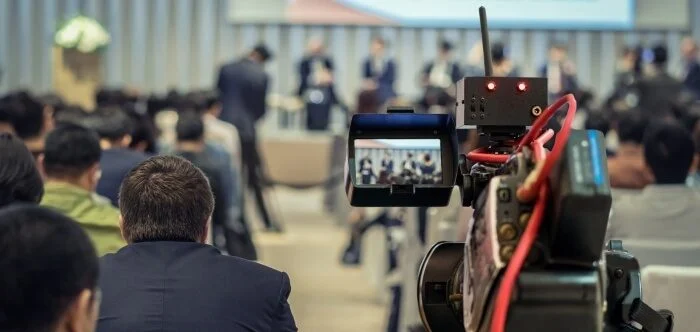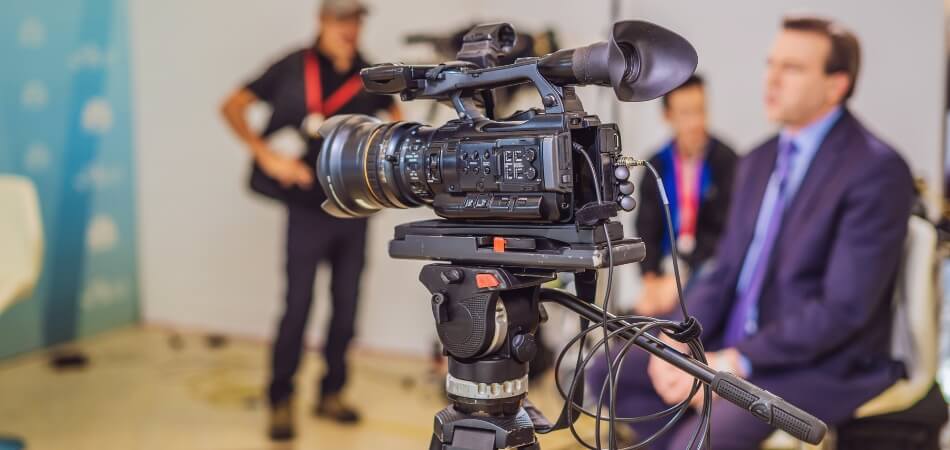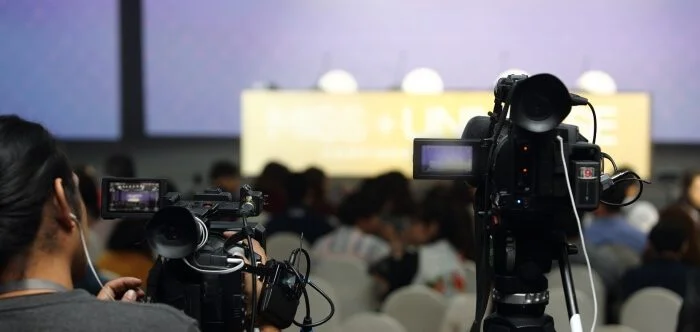Attending a conference can be full of information and opportunities, leaving you wondering how to make the most of it. To make the most of a conference it’s not just about being present; it’s about capturing the essence of the event. So, “What do you capture in a Conference?”
Presentations, discussions, and important decisions are important during a conference. By keeping an eye on the latest industry trends and collaboration opportunities, you can gain valuable networking opportunities and insights from speakers. In addition, reflection on your personal growth and takeaways can make your attendance worthwhile, ensuring a rewarding experience.
Are you curious about what else you can capture during a conference? This article will provide you with all the necessary information, helping you navigate your next event with confidence and purpose.
Conference Capturing – What is it About?
A conference capture is the process of recording and documenting a conference or meeting to preserve valuable information and insights. It involves capturing various elements like presentations, discussions, and interactions for future reference or wider dissemination.
During conference capturing, audio and video recordings ensure accurate documentation of events. These can be transcribed for easy sharing. Presentations and slideshows are also documented. For those looking to explore creative ways to take pictures at a conference, photography improves the visual record of key moments.
The primary goal of conference capturing is to create a detailed record of the event, making it possible for those who could not attend to benefit from it. It is particularly useful in academic, business, and professional settings. Furthermore, it ensures that valuable information is not lost over time by preserving historical conference records.
What Do You Capture in a Conference?
At a conference, capturing essential information is key to maximizing its value and ensuring a fruitful experience. It involves gathering valuable insights, building connections, and staying updated on industry trends. Here’s what you should capture:
Insightful Presentations
Take detailed notes on the main topics, arguments, and evidence presented by speakers. Capture the context, significance, and real-world applications of the information shared. Note any visual aids, charts, or graphs that support the presentations. Highlight key insights that are relatable to you or have practical implications.
Engaging Discussions
Document the dynamics of discussions, including questions raised, answers provided, and any passionate exchanges. Identify common themes or recurring challenges discussed across different sessions. Pay attention to the details of diverse viewpoints expressed during debates.
Critical Decisions Made
Keep a record of any resolutions, strategies, or action plans formulated during the conference. Note who was involved in decision-making and the expected outcomes or next steps. Understanding these decisions can help you align your efforts with industry trends.
Invaluable Networking Opportunities
Beyond collecting business cards, make notes about the people you meet. Record their roles, organizations, and any potential collaborations or projects discussed. Note down memorable conversations or shared interests that can serve as conversation starters later.
Speakers’ Insights
Explore deeper into speakers’ expertise by summarizing their backgrounds and contributions to their fields. Highlight practical tips, strategies, or case studies they share. Consider how their insights can be applied to your own work or projects.
Latest Industry Trends
Gather detailed information on emerging trends, technologies, and market shifts. Explore how these trends are expected to impact your industry or profession. Look for examples or success stories that illustrate the practical implications of these trends.
Potential Collaborations or Partnerships
Actively seek out opportunities for collaboration or partnership by attending relevant sessions and networking events. Note any potential synergies or shared goals with other attendees or organizations. Initiate follow-up conversations to explore collaboration further.
Personal Reflections
Dedicate time to reflect on your learning and growth during the conference. Record your takeaways, memorable moments, and areas to develop. Use these reflections to create an action plan for implementing what you’ve learned.
By focusing on these elements, you can ensure that your conference experience is both valuable and meaningful. This approach is particularly beneficial when making the most of conferences as an introvert. It allows you to extract maximum value while staying within your comfort zone.
Benefits of Capturing Conference Moments
Taking pictures of conference moments goes beyond being there physically. It involves strategically recording and documenting key aspects of the conference to reap numerous advantages. Here are the benefits in more detail:
Knowledge Preservation
Recording presentations and discussions preserves not only the content but also the context. This detailed record allows you to revisit not just what was said but how it was said, ensuring a deeper understanding of complex topics.
A Better Learning
Capturing content enables you to review sessions multiple times, at your own pace. This repeated exposure can reinforce your grasp of the subject matter, making it easier to absorb and apply knowledge.
Networking Opportunities
Documenting interactions and contacts made during the conference is crucial for professional networking. Keeping track of who you met, their areas of expertise, and any potential collaborations helps you foster meaningful connections beyond the event.
Personal Growth
Capturing conference moments is not limited to external content; it also involves your reflections. Analyzing your own insights, questions, and reactions to the presentations can lead to personal growth and a deeper understanding of your interests and aspirations.
Reference Material
As a result of the collection, a wealth of reference material has been captured. It becomes a go-to resource when you need information, data, or insights for future projects, research, or decision-making processes. It saves you time and effort seeking information later.
Take note, record sessions, and get the most out of your conference experience by capturing conference moments. You will gain knowledge, network, develop your personal skills, and gain practical reference materials in the process.
Popular Methods You Can Use for Capturing a Conference
The process of recording and documenting a conference involves various methods. These methods serve different purposes, ensuring that attendees and those unable to attend can access the content. Below are six common methods used for capturing conferences:
Video Recording
Conferences can be captured most effectively through video recording. It involves using cameras to film speakers, presentations, and discussions. This method provides a visual and auditory record of the event, allowing viewers to see facial expressions and presentation materials.
Audio Recording
This method of recording is a cost-effective method of keeping track of presentations, discussions, and Q&A sessions. It is a method that ensures attendees can revisit the content even without visuals. This method is particularly useful with podcasting and the creation of audio content.
Note-Taking and Documentation
It is a valuable method for capturing content. It involves summarizing key points, quotes, and insights that are relevant to the conference proceedings. In addition, transcriptions are especially beneficial for accessibility and future reference since they are converted into text.
Live Blogging and Social Media Updates
The live blogging and social media updates involve real-time updates from the conference via platforms such as Twitter, Facebook, or a dedicated website. This method gives attendees instant access to highlights and other key takeaways as the event unfolds.
Photography
During a conference, photographers capture a variety of visual moments, such as candid shots, networking, and the atmosphere of the location. While not as content-rich as video or audio, photos can help document the event’s ambiance and memorable moments.
Interactive Platforms and Virtual Reality
Using technology, conferences can be captured by interactive platforms or virtual reality (VR). Attendees can experience the event digitally, with features like 360-degree video or virtual booths for exhibitors. Understanding the consequences of not attending a conference, you can reduce the risk of missing valuable insights by engaging with these interactive tools remotely.
The formats and purposes of conference capturing methods vary, so event organizers can choose the one that meets their goals and resources. Combining multiple methods can provide a complete and engaging record of the conference for a diverse audience.
Barriers You May Face While Capturing Conference Moments
It can be difficult to capture conference moments as a result of various obstacles that hamper the process. Here are some common challenges.
- Technical Issues: Poor equipment or malfunctioning devices can lead to bad recordings. To prevent this, invest in quality audio and video gear or have backup equipment on hand.
- Distractions: Noise, interruptions, or crowded spaces can affect your ability to focus. Seek out quiet areas, use noise-canceling headphones, or communicate your need for concentration to others.
- Limited Access: Some sessions or speakers may restrict recording. Always check conference guidelines and seek permission when necessary to ensure conformity.
- Information Overload: Quick presentations or discussions may confuse you. Prioritize note-taking by capturing main points and use shorthand to keep up.
- Language Barriers: Understanding content in a foreign language can be challenging. Utilize translation apps or services, or attend sessions in your native language.
- Data Management: Organizing and storing captured data can be challenging. Use digital tools like note-taking apps or cloud storage to keep your information organized and easily accessible.
In managing these barriers, it’s essential to plan, have backup solutions, and respect conference guidelines. Stay adaptable and resourceful to capture the most valuable moments.
FAQs for What Do You Capture in a Conference?
Capturing key information during a conference is essential for maximizing your experience and ensuring you derive value from the event. Understanding what to capture can improve your learning, networking, and overall engagement. Here are some frequently asked questions about capturing essential elements in a conference setting.
What Type of Notes Should You Take During Presentations?
The importance of taking notes during presentations cannot be ignored. Focus on main topics, supporting evidence, and significant insights shared by speakers. Highlight any practical applications or examples given. These notes will serve as a valuable reference for your future projects and discussions.
How Can You Effectively Document Networking Opportunities?
To effectively document networking opportunities, write down the names and roles of individuals you meet. Note any specific topics discussed and potential collaborations. Additionally, record personal details, like shared interests, to strengthen your connections and facilitate follow-up conversations after the conference.
What Insights Should You Capture from Panel Discussions?
During panel discussions, focus on the varying viewpoints expressed by different speakers. Document the questions raised and the answers provided, highlighting any common themes. Capturing these insights can help you understand the broader industry landscape and diverse perspectives on important issues.
How Can You Reflect on Your Personal Takeaways After the Conference?
Take time to reflect on your conference experience afterward. Identify key lessons learned, moments of inspiration, and areas for personal development. Writing these reflections down can create a roadmap for implementing newfound knowledge and strategies in your work.
What Should You Consider When Capturing Industry Trends?
Focus on emerging technologies, market shifts, and innovative practices discussed at conferences when capturing industry trends. Document specific examples or case studies that illustrate these trends. Understanding these insights will help you stay relevant and adaptable in your field.
Bottom Line
When attending a conference, it’s crucial to go beyond mere attendance and actively capture the valuable moments it offers. As discussed in the articles, “What do you capture in a Conference?” entails recording insightful presentations, engaging discussions, networking opportunities, and personal reflections.
Conference capturing methods, like video recording and note-taking, provide diverse tools for preserving the event’s essence. Overcoming barriers, such as technical issues and distractions, is essential for effective capturing.
The perks of capturing conference moments, including knowledge preservation, improved learning, and personal growth, underscore the significance of this practice. So, remember, it’s not just about being present; it’s about what you capture at a conference that can profoundly impact your professional and personal development.








